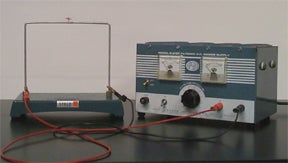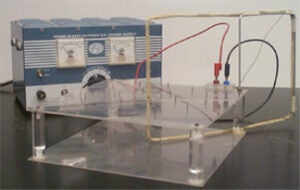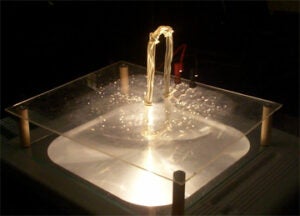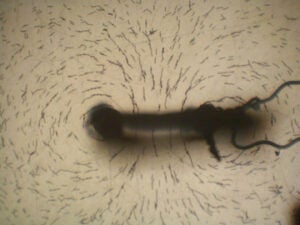-
This apparatus consists of a thick wire bent and set standing on a support. A small compass needle is set close to the wire and it is free to move on its plane. On the supporting plate there are connectors for the power supply. When a current runs through the wire, the compass needle is deflected, illustrating the magnetic effects of current flowing in a wire. One set can be used with the overhead projector.
No deflection is observed if the compass needle is placed near to and at right angles to the current carrying wire. That was how H.C. Oersted used to demonstrate in his lectures at the University of Copenhagen the non-existence of a connection between electricity and magnetism. Until the day that a student asked him what would happen if the needle were placed parallel to the wire.

-
A wire runs perpendicular to a clear Plexiglas’s plate. The plate has small compasses placed on sharp pins attached radially around the wire. When the wire carries a current, the magnetic field around the wire will be detected by the compasses. A switch connected to the circuit allows one to change the current direction and observe the correspondent change on the compasses needle’s orientation. It is done on the overhead projector enabling the whole class to observe it. For a well-defined effect, a coil of about 15 loops is used instead of a single wire.
One could also sprinkle iron fillings over the plate and observe how the iron bits group themselves closer to the wire where the field is stronger.

-
Iron fillings reveal the magnetic field lines in the plane perpendicular to two parallel wires. Different patters emerge when the currents in the two wires travel in the same or opposite directions.


Magnetic Effects of Current
Contact our lab
Visit Us
USC Physics Lecture Support Lab SLH (Stauffer Lecture Hall) – 104
Department of Physics and Astronomy
University of Southern California
Los Angeles
Questions or Comments
If you have questions or comments e-mail us or call at phone number below.